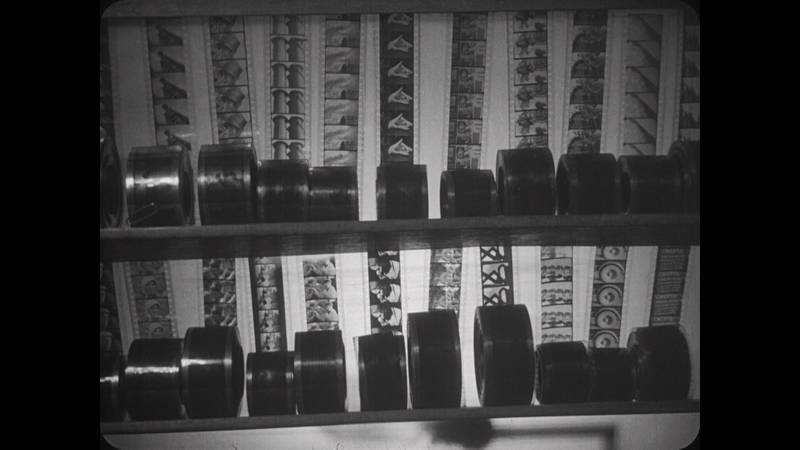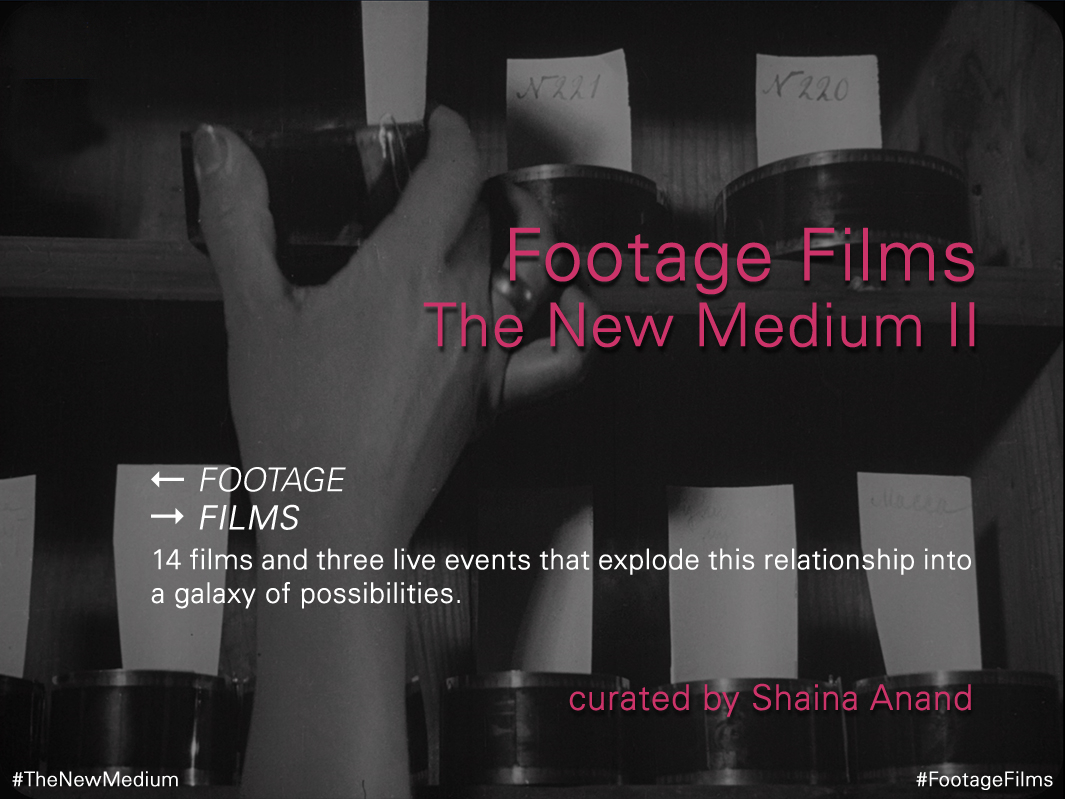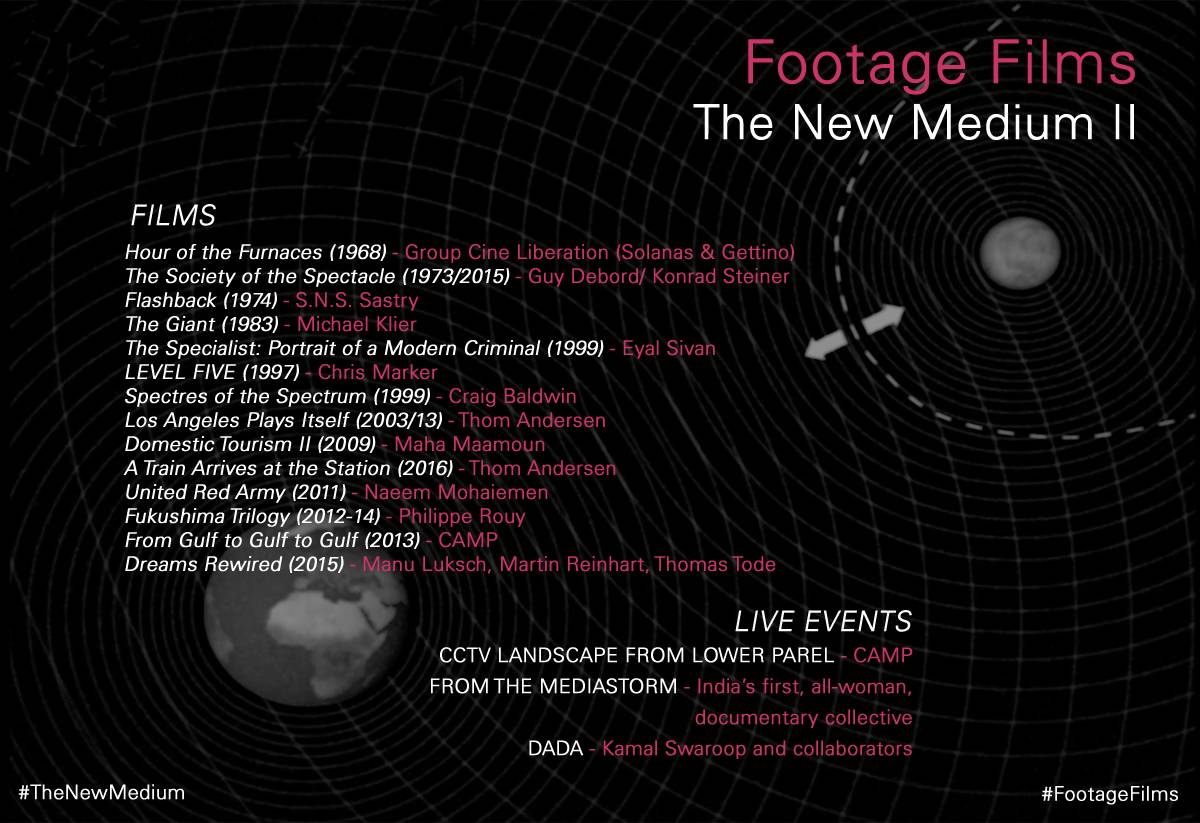
THE NEW MEDIUM II - FOOTAGE FILMS
Oct. 11, 2017 - Oct. 18, 2017





The New Medium was a curated programme for the Mumbai International Film Festival for three consecutive years (2016-2018). The inaugural program - in a twisted art-historical mode - framed cinema as a new medium (125 years old, when compared to the other arts), and scoured the century of cinema chronologically...
by Johan Grimonprez
150 mins| 2024|
7:00 pm
A story about the encounter of American Jazz and African decolonisation, via the UN and the CIA, with a lot of world around it.
A 200-year neighbourhood story told through a single camera mounted on a cinema hall, 90 minutes.
Opening event
The New Medium II: Footage Films
Friday 13th Oct 2017
5:30 pm to 7:00 pm
IMAX at PVR Phoenix
also
Monday 16th Oct 2017
5:30 pm to 7:00 pm
PVR Phoenix 6
With Ranjani Mazumdar, Shohini Ghosh, Charu Gargi and Shikha Jingan
Live Event
The New Medium II: Footage Films
14 Oct, PVR Icon audi 1, 12.00 pm
Meet the members of India's first, woman-only, documentary collective and revisit their history and prescient video practice.
with Kamal Swaroop and collaborators, a Journey through Phalke's world.
Live Event
The New Medium II: Footage Films.
17 Oct, PVR Icon 6:30 pm
A chronological viewing of 14 films beginning with Vertovs Man with the Movie Camera, and concluding with Farockis Parallel I-IV; The New Medium presents innovations in Cinema.
At the 18th MAMI Film Festival
20th October to 27th October 2016
Mumbai
When the moving image came into being it was seen as the seventh art, an alchemical medium with the potential to transform the spatial arts: architecture, sculpture and painting, and the temporal arts: music, poetry and dance.
A 2-day festival within the Mumbai Film Festival. Sixteen multi-screen films and video installations by pioneering filmmakers and artists, many of them Asian premieres, will be presented in the cinema hall. Curated by Shaina Anand.
CAMP presents Saturday or Sunday evening screenings through winter,
exploring footage both within and outside the usual capsule of "the
film". An experience that could be similar to watching films, or at
other times harder to digest, or slower to release, closer to the moment of
shooting, less censorious, and less fearful of finitude. Another life,
another world of viewing and listening experiences is always possible.
Ashok S was on the selection committee for the India Foundation for the Arts (IFA) Arts Platforms Grant, 2025. Awarded projects included puppetry, DJ spaces, and AI and law.
A tour of the work with CAMP in three acts.
at
CAMP Study Day, brings together leading scholars of media, law, cinema, and visual art on the occasion CAMP's exhibition Video After Video: The Critical Media of CAMP. With Erika Balsom, Lawrence Liang, Debashree Mukherjee, Ashish Rajadhyaksha and Laura U. Marks.
at
Light Industry
7:00 pm
The first and last sections from a 6-hour-long video essay, presented live by CAMP.
Priyank Gothwal presents a series of 8 works as a physical exhibition and accompanying lecture-performance, on the experiences and abstractions of time.
A conversation about toxicity, waste and equality at the closing of Mohit Shelare's exhibition at Chemould, with Yogesh, Zeenat, Priyank and Ashok.
"film objects"
A gathering organised by the Delhi based artist group first draft.
Saturday from 5 pm.
Phantas.ma is running a season dedicated to CAMP as part of Video After Video: The Critical Media of CAMP at MoMA.
A video a day, on the site.
sign up!
Sunday, 7:00 pm
100 mins
Pandemic shorts by Panahi, Poitras, Apichatpong, Weiwei, and others.